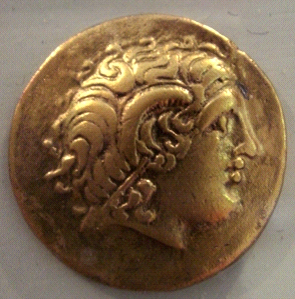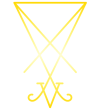Names of Zeus: Beli
Beli Mawr (“Great Bel”) appears in many Welsh texts as an ancestral figure of all rulers of Britain. His name also appears in medieval Welsh poetry, sometimes linked to light, kingship, and the heavens, reinforcing an identity as a God of light and the skies. In Gaul, Zeus was also known as Taranis, a God of thunder and the wheel, whose integration into Roman religion is more clearly understood.
THE CELTIC ISSUE
British and Welsh mythology was heavily Christianized from an early date. To add to this obscured state of affairs, even the infamous Druids of history communicated through complex oral codes rather than writing much down, similar to the ornate verbal symbolism of the Pythagoreans. It was even forbidden to write down or elaborate on what the divine verses meant:
Book 6, De Bello Gallico, Julius Caesar
They are said there to learn by heart a great number of verses; accordingly, some remain in the course of training twenty years. Nor do they regard it lawful to commit these to writing, though in almost all other matters, in their public and private transactions, they use Greek characters. That practice they seem to me to have adopted for two reasons; because they neither desire their doctrines to be divulged among the mass of the people, nor those who learn, to devote themselves the less to the efforts of memory, relying on writing; since it generally occurs to most men, that, in their dependence on writing, they relax their diligence in learning thoroughly, and their employment of the memory.
They wish to inculcate this as one of their leading tenets, that souls do not become extinct, but pass after death from one body to another, and they think that men by this tenet are in a great degree excited to valor, the fear of death being disregarded. They likewise discuss and impart to the youth many things respecting the stars and their motion, respecting the extent of the world and of our earth, respecting the nature of things, respecting the power and the majesty of the immortal gods…
Julius Caesar also mentions that Dies Pater is the ancestor of all Celtic peoples and was actively regarded as such. The primary word for ‘God’ in Welsh is Duw (Old Welsh: Diow), related to Dio of Zeus, Día in Irish, Deus in Latin, and possibly Dumn in Romanian.
The genealogies begin with the paternal and maternal pedigrees of King Hywel Dda and extend back to Beli Mawr, highlighting his significance in the royal lineage of Gwynedd, particularly the most powerful Welsh state. Beli was known to be either the father or husband of Don, known as Danu in Irish. In the Old North (Scotland to Cumbria), heroes such as Urien Rheged, Gwenddolau, and Llywarch Hen traced their lineage to Beli through the ancestor Coel Hen. Geoffrey of Monmouth’s history of the British monarchs claims he ruled the throne for forty years: the most holy number of Zeus.
BELENOS AND THE SERPENT
This ancestor figure is an evolution of the God Belenos, a God associated with thunder, serpents, and fate. Another scholar, Posedonius, says the Celts of Galatia would organize all military matters in the Sacred Oak Grove, the Drunemeton.
Various references to the serpent occur with this figure in the poem Kein Gyfedwch:
Kein Gyfedwch:
Ry yscrifyat
Virein ffo racdaw.
Ar lleg kaw
Mwyedic uein
Dreic amgyffreu.Translation:
It is written:
A maiden flees before him.
And the grey stallion
Is greater in strength,
A serpent coils around it.
Beli is said to watch with a serpent’s qualities over “the places of the drinking vessels,” as his people “drink in golden horns, golden horns in the hand, a hand in foam.” He is said to rule over a blessed island bestowed with golden horns, a symbolic reference to the life force and activated witchpower.
He resides in “a strong fortress” within the island and rules over two lakes, a reference to the dual functions of Zeus as the active expression of Truth. He is also called the “Guardian of the Paths.”
Another poem references his qualities:
“Like the effect of the oar in the brine is the liquor of Beli / Like a shield of light on the back of a shadow.”
This references the invigoration of the soul through Beli’s powers, with the shield of light representing similar concepts to the themes of Zeus in mythology.
Another cryptic message occurs in the forty-second verse of the medieval Englynion y Clyweid (“Stanzas of the Wise Sayings”), a collection of 72 ancient sayings of ancestral figures put into verse:
Englynion y Clyweid:
Have you heard what Beleu sang?
Among the birds at play,
Every long night ends in death.
The symbolism of Beli to Odin and other figures who underwent transformation of the soul through death should be obvious from this message.
It is said in the inherent text The Mabinogion and in other works that Beli was totally driven out by Maxientius, who is hinted to have imposed Christianity strongly on Britain, paralleling the casting out of the serpent by St. Patrick in Ireland. The process of Christianization in post-Roman Britain was extremely thorough and extended even into the most remote parts of society.
Many Welsh elaborations of poetry share highly cryptic symbolism; they are clearly designed around the repetition of codes and themes, reflecting the need for secrecy. This ties into the known fact that Celtic religion was transmitted orally and not easily revealed. In one dialogue, the sister of Merlin, Gwenddydd, asks him who could replace the best of rulers:
Red Book of Hergest:
Merlin
A good and noble ruler will he be,
Who will conquer the land
And bring joy to all.
Gwenddydd
I ask my profound brother,
Whom I have tenderly nourished,
Who will be sovereign then?
Merlin
Let there be a cry in the valley!
Beli Mawr and his whirlwind warriors,
Blessed by the British, woe to Gynt.
Another facet is the connection to the great hero Alexander the Great. The Celts were strongly aware of his image. Several poems by Taliesin and others are dedicated to his memory, including one that references his alignment with the lord of the sky. The southern tribes of Britain and Gaul used coinage bearing his image, clad in ram’s horns, on nearly all extant coins.

Coin of Sequani Gauls
There was also a solar aspect to Belenos, named Apollo Belenus, who was worshipped prolifically in Roman Gaul and in parts of Italy previously inhabited by the Celts. This entity represented the powers of the being we know as Amon Ra, rather than Zeus.
Many visual similarities appear to exist between the Phoenician representations of Baal and the Celtic variations, often clad with axes and hammers. In many sources, including Welsh poetry, references to Tyre and Carthage are prominent. It is also known that the cult of Jupiter Dolichenus had spread far and wide into Britain by Roman times.
BELTANE
Beltane is one of the four major fire festivals of the ancient Celtic calendar, celebrated primarily in Scotland, Ireland, and Wales. Marking the transition between spring and summer, Beltane was historically associated with fertility, protection, and the renewal of life. Although Beltane is referenced in Irish manuals, the Welsh called this festival Cyntefin, meaning “beginning of the summer.”
The solstice was an essential festival in pre-Christian Britain. It signified the agricultural cycle, the movement of livestock, and communal rituals aimed at securing prosperity. It also marked the end of spring, which Zeus inaugurates.
According to the 17th-century Irish historian Geoffrey Keating, each Beltane at the hill of Uisneach in medieval Ireland included celebrations where a sacrifice of food was made to a God named Beil. Subsequent excavations of the site have supported his claims. For many years, this assertion was equated with the Baal from the Bible, showing a certain subconscious understanding.
From ancient times, it was known that the Druids lit bonfires and sacrificial flames in groups of nine men, a tradition that continued well into the 1830s in some parts of Wales, Cornwall, and Brittany. The first maypole recorded, from the 1300s by Gruffudd ab Adda ap Dafydd, is a known description of this type of celebration. By the time of Geoffrey Chaucer later in the century, it seems to have either already been present or had spread into areas of England.
TARANIS
Taranis (from Gaulish taran, “thunder”) was worshipped in Gaul, Hispania, and the Rhineland as a God of thunder and storms. Roman writers (like the poet Lucan in the 1st century AD) list Taranis alongside Teutates and Esus as the chief deities of the Gauls. Taranis was explicitly identified with Jupiter by the Romans. In the interpretatio Romana, they saw the Celtic thunder-god as essentially the local Jupiter.
Indeed, many Celtic sanctuaries to Jupiter (Jupiter Optimus Maximus) in Roman Gaul show assimilation of Taranis’s symbols, most notably, the wheel and thunderbolt. Carvings and altars depict a God holding a wheel in one hand and a lightning bolt in the other, merging Celtic and Roman iconography. The wheel, a common Celtic solar symbol (perhaps representing the sun’s course or the wheel of heaven), was associated with Taranis as a sign of the sky and cyclic time.
Jupiter columns erected in Romanized Gaul often depict Jupiter on horseback, holding a thunderbolt and trampling a serpent or giant, with a celestial wheel displayed. This is a syncretic image: Jupiter in heroic pose combined with Taranis’s wheel.
BIBLIOGRAPHY
Histories, Poseidonius
De Bello Gallico, Julius Caesar
Book of Taliesin
Mabinogion
Red Book of Hergest
The History of Ireland, Geoffrey Keating
The Religion of the Ancient Celts, J.A. MacCulloch
CREDITS:
Karnonnos [TG]

 አማርኛ
አማርኛ العربية
العربية বাংলা
বাংলা Български
Български 中国
中国 Čeština
Čeština Dansk
Dansk Deutsch
Deutsch Eesti
Eesti Ελληνικά
Ελληνικά Español
Español Français
Français हिन्दी
हिन्दी Hrvatski
Hrvatski IsiZulu
IsiZulu Italiano
Italiano 日本語
日本語 Kiswahili
Kiswahili Magyar
Magyar Македонски
Македонски नेपाली
नेपाली Nederlands
Nederlands فارسی
فارسی Polski
Polski Português
Português Română
Română Русский
Русский Slovenščina
Slovenščina Svenska
Svenska Tagalog
Tagalog Türkçe
Türkçe